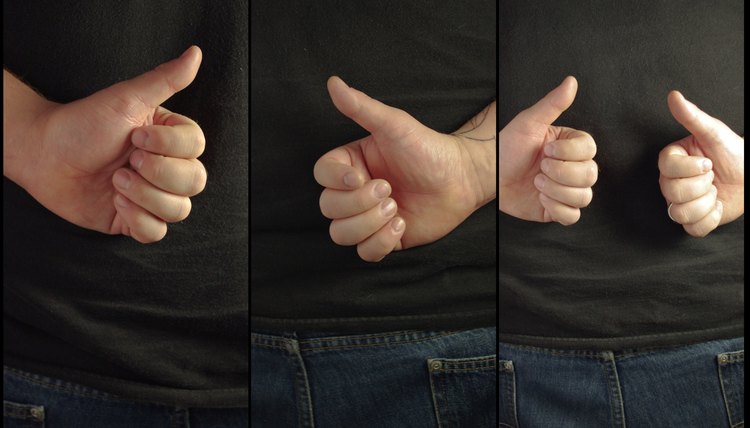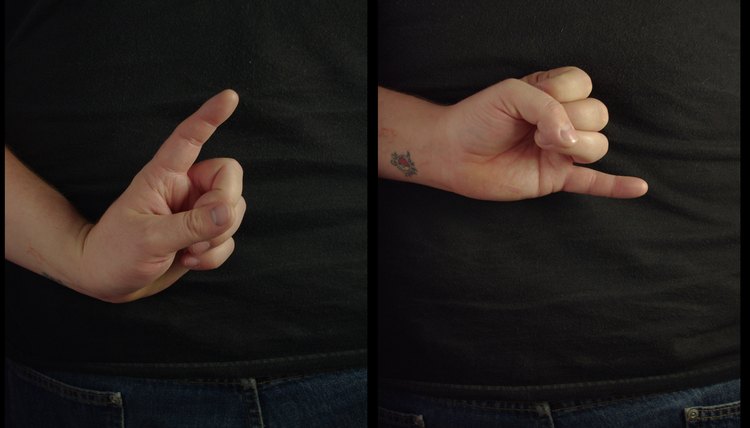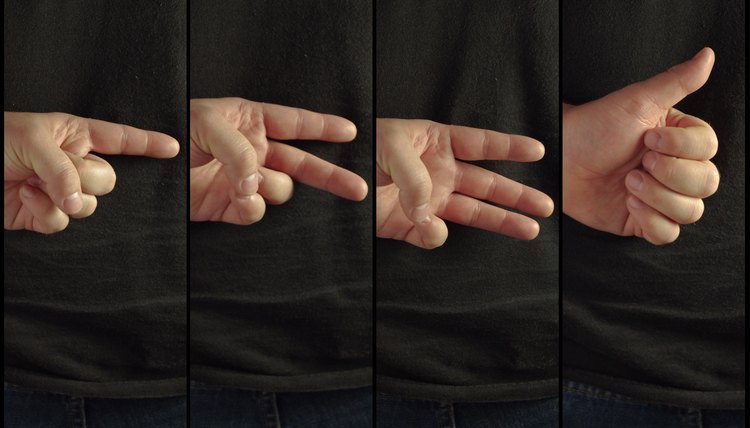Hand Signals That Volleyball Setters Use

Like a basketball point guard on a basketball team or a football quarterback, setters are the leaders on the court for their volleyball team. Just as point guards and quarterbacks call plays for their offense, setters communicate plays and strategies to teammates for each point. There is one difference, however: Setters relay these tactics primarily through hand signals.
Zone Serving Signals

Hannah Kraft/Demand Media
Some coaches allow their setters to choose the zones each server should attack. Setters use their fingers to communicate the zones. The numbers for each zone are the standard zone serving system used worldwide. If the setter flashes one finger behind her back, the serve delivers the ball to Zone 1, or right back. Two fingers indicate Zone 2, or right front. Zone 3 is middle front, Zone 4 is left front, and Zone 5 is left back. Setters flash just their thumb to indicate Zone 6, or middle back.
Simpler Serving Signals

Hannah Kraft/Demand Media
Some coaches prefer to tell their servers to serve to a more general area of the court instead of a specific zone. Setters show their right thumb behind their back to communicate that the serve should go to the right side of the court. Showing the left thumb means serving to the left side. Flashing both thumbs communicates serving down the center of the court. A setter can also shake his right hand to tell the server to serve to a weak passer on the right side of the court. Shaking his left hand lets the serve know to serve to a struggling passer on the left side.
Quick Set Signals

Hannah Kraft/Demand Media
Setters can use hand signals to tell hitters what type of set they will execute on a particular play. For instance, the setter points his index finger up to signify a vertical quick set, or one set, is coming. A pinky finger pointing up indicates a vertical quick set to the right-side hitter, also known as a back one set. A pinky finger pointed sideways means a back slide attack using a horizontal quick set. A hand brushing down the middle of the chest designates a pipe set to the back row hitter positioned in the middle of the court.
High Set Signals

Hannah Kraft/Demand Media
Setters can also use hand signals when calling plays for high sets. For a high set to Zone 1, or right back, the setter flashes one finger and then flashes two fingers. The hitter then calls out "12" to confirm the play call. The setter shows two fingers and then flashes two fingers again for a "22" high set to Zone 2. Three fingers followed by two fingers communicates a "32" high set to Zone 3. A "42" is a high set to Zone 4. A "52" is a high set to Zone 5. The setter uses her thumb to represent six followed by two fingers for a "62" high set to Zone 6.
Writer Bio
Jeff Smith spent eight years as a reporter and sports editor before working for 15 years as a copywriter and editorial manager at Awana, one of the world's largest children's ministries. Today he operates Write for Your Cause, an editorial service, and writes sports articles for the "Daily Herald."
